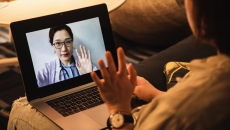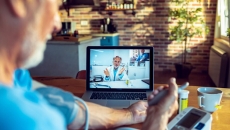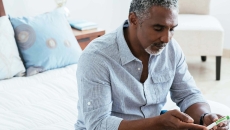Telehealth
Beneficiaries used 88 times more telehealth services during the first year of the pandemic than they used in the prior year.
Most consider telehealth convenient, but about 28% describe it as frustrating, citing care quality and technical considerations.
By reimagining the technology it was already using, the South Dakota health system has also preserved supplies and earned high satisfaction.
As specialty care is more complex, CEO calls Summus Global 'Virtual Care 2.0.'
The organizations express concern that, when the public health emergency waiver ends, many patients will be left without access to care.
The popularity of MA has exploded, but AHIP officials want to protect MA before the end of the pandemic signals a shift in flexibilities.
Mayo Clinic is able to send kidney and marrow transplant patients home to recover to a hospital level of care, says Medically Home CEO Rami Karjian.
This week's top stories include Black, Hispanic, Asian American and other minority Medicaid enrollees reporting significantly worse experiences around care access compared to their white counterparts, and Amazon Care expanding in-person services to 20 new cities.
The collaboration gives Banner|Aetna's fully insured and employer group members access to the virtual, provider-led diabetes program.
Most patients responded well to medication and/or psychotherapy - sometimes called 'talk therapy' - for their condition.









